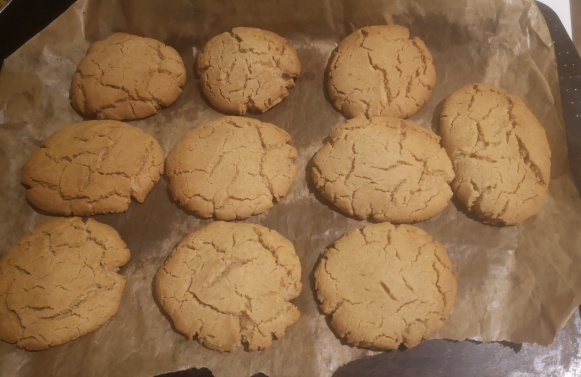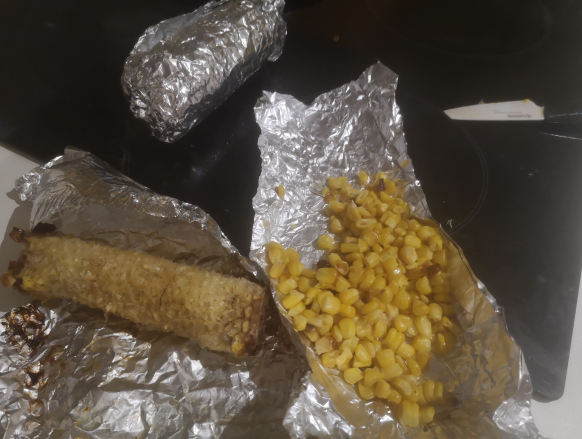A couple of weeks ago I had to use ginger nuts cookies for a recipe. So now I wanted to make my own, because after eating a cookie you will feel alright.
So searching a bit, a decided to try this version:
Ingredients (10 cookies of decent size)
- 200g self-raising flour
- 2 tsp bicarbonate of soda
- 4-5 tsp ground ginger (if you want a bit more, they will more fiery!)
- 80g caster sugar
- 100g melted butter
- 4 tbsp golden syrup (or honey)
Process
- Preheat oven around 190C. Line one baking tray with nonstick baking paper
- Sieve flour, bicarbonate and ginger in a bow. Then add the sugar
- Make a well in the center of the bowl, add the melted butter and syrup. Stir until combine. In my case, the dough was a bit crumbly. Maybe needs a bit more butter?
- From the dough, take pieces and form roughly a ball, then flat it and put it in the tray. It looks delicate but it is fine.
- Bake for 10-12 MAX! I did 10 minutes. Just slight golden and with cracks on top.
- Remove from oven and let it cool down in a rack if you have. If you touch them they feel soft and not baked, but let it be. Once they cool down, they will firm up!.
It is a quick recipe, the result was tasty!

NOTE: Somehow, after so many years I noticed that tsp = tea spoon (small) and tbsp = table spoon (big)!!! I think I have always used the same measure /o\ Well, still got most things right anyway 🙂
As well, somehow, I bought this week a package with two corns on the cob and baked them in the oven.
Ingredients
- A couple of corn on the cob pieces + foil to wrap
- a bit of butter
Process
- Preheat oven at 200C
- Clean with water the corn cobs and wrap it in foil (dont leave any part without cover)
- Bake for 40 minutes
- Remove from oven, remove foil (you can reuse it) carefully, put a bit of butter (it will melt). Wait a bit and then you can eat it directly or remove the kernels with a knife.

I was really amaze with the flavour! Somehow I felt like eating corn flakes with milk! And actually, I took a gulp of milk after eat.
I want to try more often and using a fresh corn cob.